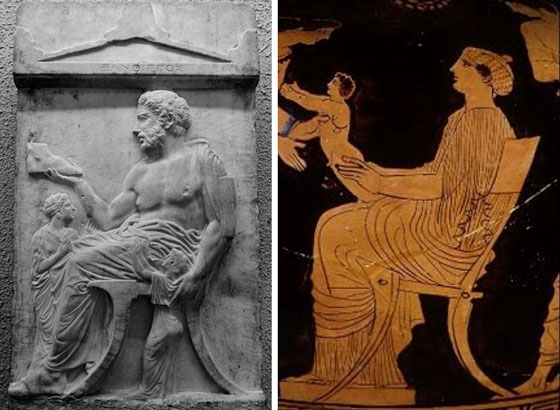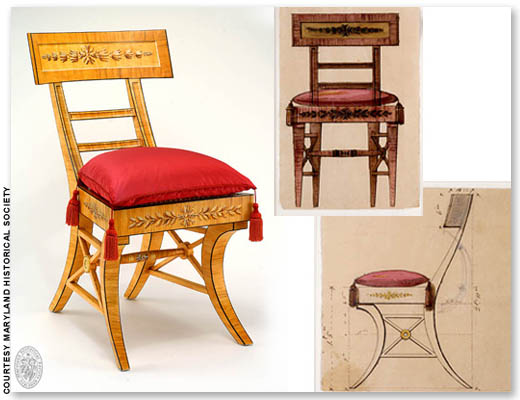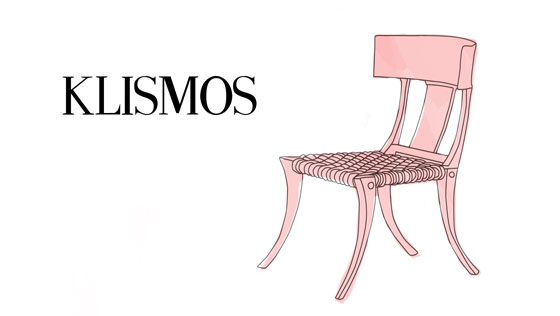I have been reading a lot about ancient furniture lately, and it’s fascinating to trace iconic furniture designs to their roots in antiquity. Take for example the klismos chair, an Ancient Greek design circa the mid-fifth century BC. The klismos has a concave upper backrest and tapered legs that curve outwards. The seat was usually woven leather or some other cording, upon which sat a cushion or animal pelt. Our knowledge about klismoi has mostly been gleaned from depictions in carvings and other artwork.
 Depictions of klismoi in antiquity. Source: House Appeal.
Depictions of klismoi in antiquity. Source: House Appeal.
The klismos fell out of style during the Hellenistic period, in part due to a design flaw: without the support of stretchers, the outward curving legs eventually splay too far and break.
Nevertheless European Neoclassicism returned the klismos to favor. Painter Jacques Louis-David commissioned klismoi as set props for his historical paintings. British-born Neoclassicist Benjamin Henry Latrobe helped insinuate this chair into American culture. Latrobe built a set of klismos chairs– with reinforcing stretchers– for the White House. Art Deco and Modernism adapted and reimagined the traditional klismos design. Even today, popular retailers like Restoration Hardware and West Elm continue to produce contemporary incarnations of the ancient style.
 Latrobe’s design for the White House klismos chair. Source: J Black.
Latrobe’s design for the White House klismos chair. Source: J Black.
Sources: 1) Victor Werner 2) 1st Dibs 3) 1st Dibs 4) Anziano via House Beautiful 5) Alexa Hampton via Janet Brown Design



Comments 1
We enjoyed your post about the klismos chair. Thank you for mentioning Janet Brown Interiors in your reference to the design by Alexa Hampton.
Kind regards,
Kathleen at Janet Brown Interiors